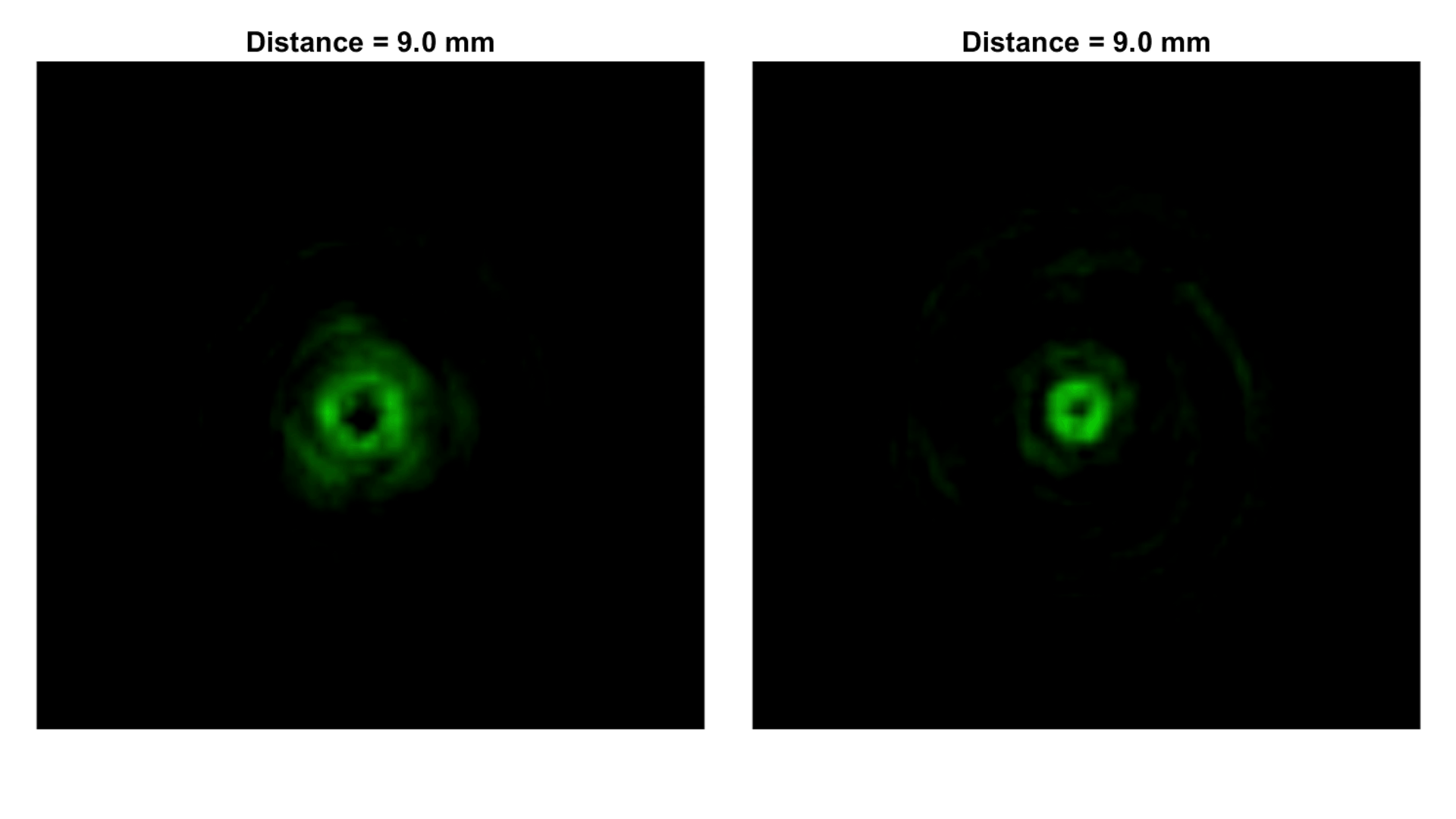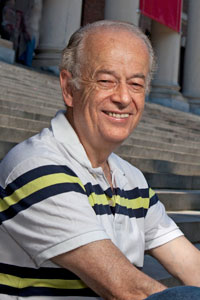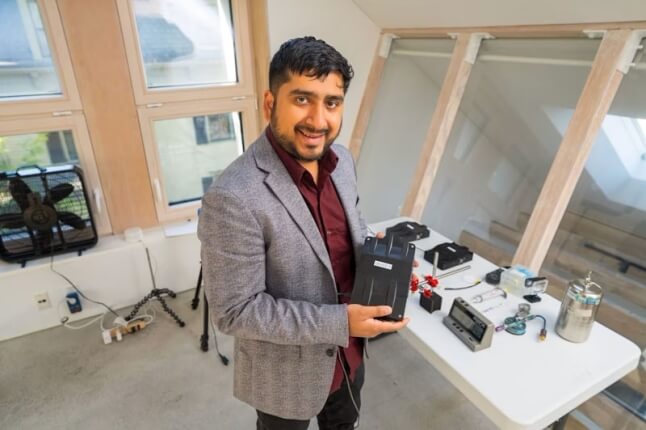News
Structured light — light that can bend into vortices and twist into spirals— has a wide range of applications from super high-resolution imaging to precise molecular manipulation and communications
Generating and controlling structured light is challenging. Most common approaches have focused on controlling two specific aspects of light —orbital angular momentum and circular polarization, otherwise known as spin angular momentum.
Polarization is the direction along which light vibrates. In circularly polarized light, the vibration of light traces a circle. Think about orbital angular momentum and circular polarization like the motion of a planet. Circular polarization is the direction in which a planet rotates on its axis while orbital momentum describes how the planet orbits the sun.
So far, researchers have controlled these two aspects of light separately and in a fixed location, like a snapshot. But light, like planets, moves through space. What if you could control and tune both these aspects of light independently as it propagates?
Earlier this year, researchers from the Harvard John A. Paulson School of Engineering and Applied Sciences (SEAS) developed a metasurface that can control the polarization of light through space along the path of the beam.
Now, the same research team has demonstrated compact metasurfaces that can control both the polarization and orbital angular momentum of light along its propagation path and can convert any input polarization of light into complex states of structured light that change as they propagate through space. The device is tunable and multifunctional, so that different input polarizations of light can produce different structural vortices.

The movie shows a sequence of camera images for the optical beams, produced by one of the devices, as they evolve in space. Each frame is captured at a different distance in front of the meta-optic. By switching the input polarization, the output beam can reduce the size of its donut-like profile (left) or expand it (right), hence modifying the underlying orbital angular momentum in 3D depending on the input polarization. (Credit: Capasso Lab/Harvard SEAS)
The movie shows a sequence of camera images for the optical beams, produced by one of the devices, as they evolve in space. Each frame is captured at a different distance in front of the meta-optic. By switching the input polarization, the output beam can reduce the size of its donut-like profile (left) or expand it (right), hence modifying the underlying orbital angular momentum in 3D depending on the input polarization. (Credit: Capasso Lab/Harvard SEAS)
The research is published in Nature Communications.
“Compact and integrated devices of this type can advance light-matter interaction, free space communications, and imaging and may enable applications that are not accessible via other wavefront shaping tools, such as remote sensing,” said Federico Capasso, the Robert L. Wallace Professor of Applied Physics and Vinton Hayes Senior Research Fellow in Electrical Engineering.
“We have demonstrated a new class of optics that performs the most general transformation between light’s spin and orbital angular momenta, coupling any two polarizations into distinct spatially varying structures,” said Ahmed H. Dorrah, a postdoctoral fellow at SEAS and first author of the paper. “We have also shown how the response of a static metasurface can be tuned by simply changing the input polarization. Light’s polarization acts as a knob for the device, enabling an all-optical switchable response.”
Alternative methods that could perform the same functions require complex and bulky benchtop setups with least three liquid crystal displays and additional bulk optics. In the future, the same research team plans to further extend this effort and generate structured light that changes its properties both in space and time.
The research is co-authored by Noah A. Rubin, Michele Tamagnone and Aun Zaidi.
It was supported in part by the Office of Naval Research (ONR), under MURI grant no. N00014-20-1-2450 and the Air Force Office of Scientific Research (AFOSR), under grant no. FA95550-19-1-0135.
Topics: Applied Physics, Optics / Photonics
Cutting-edge science delivered direct to your inbox.
Join the Harvard SEAS mailing list.
Scientist Profiles
Federico Capasso
Robert L. Wallace Professor of Applied Physics and Vinton Hayes Senior Research Fellow in Electrical Engineering
Press Contact
Leah Burrows | 617-496-1351 | lburrows@seas.harvard.edu



